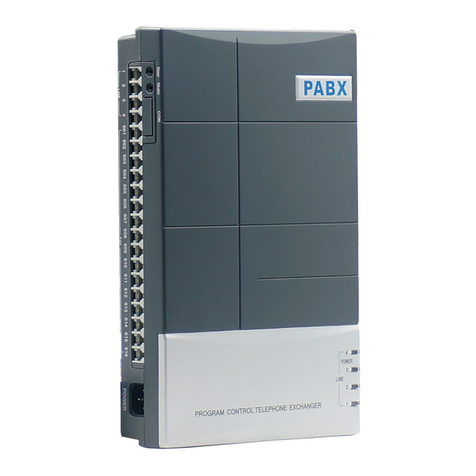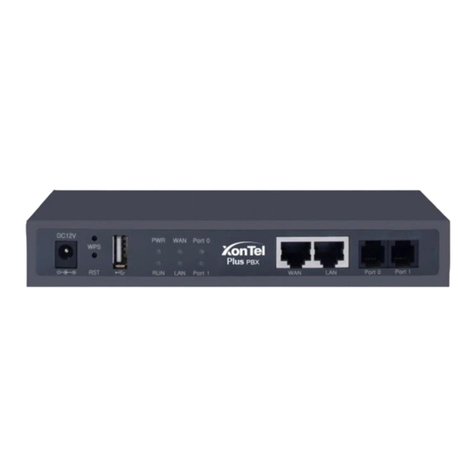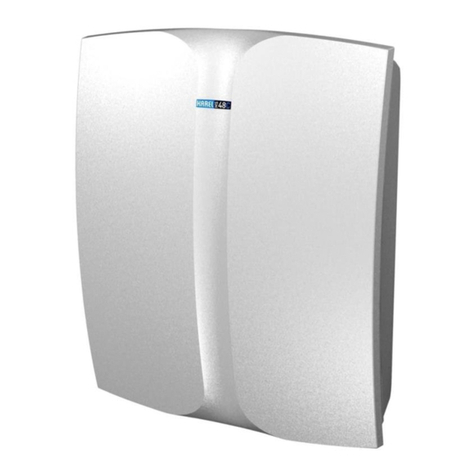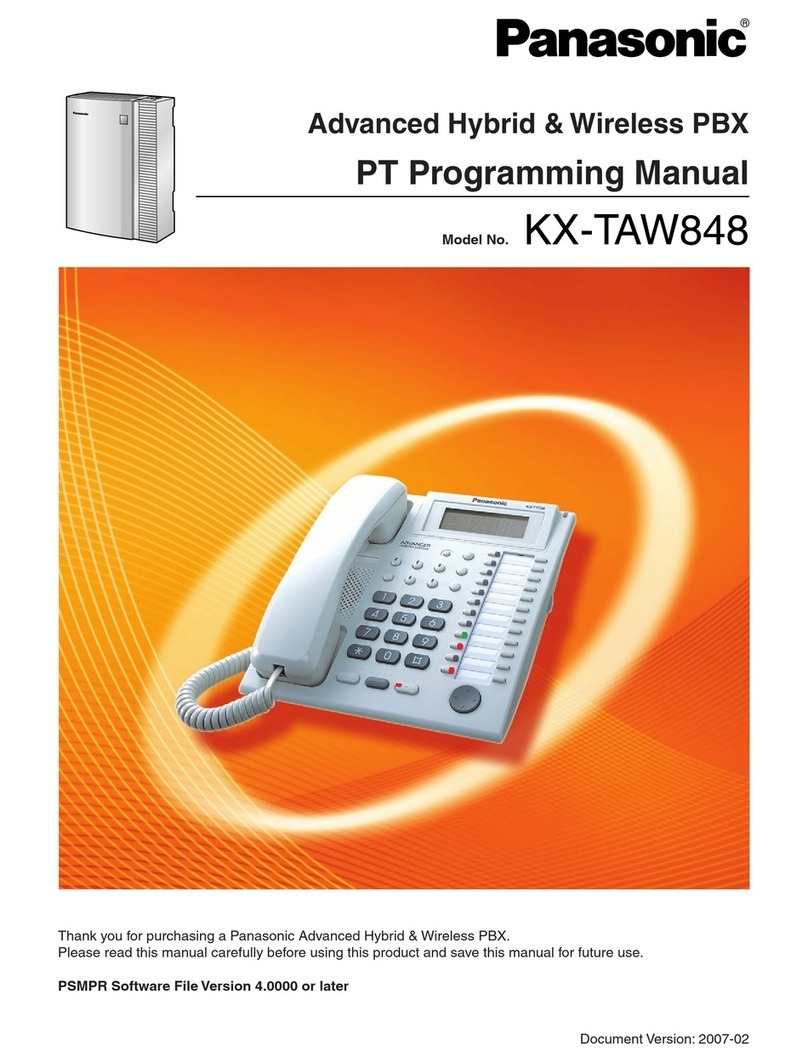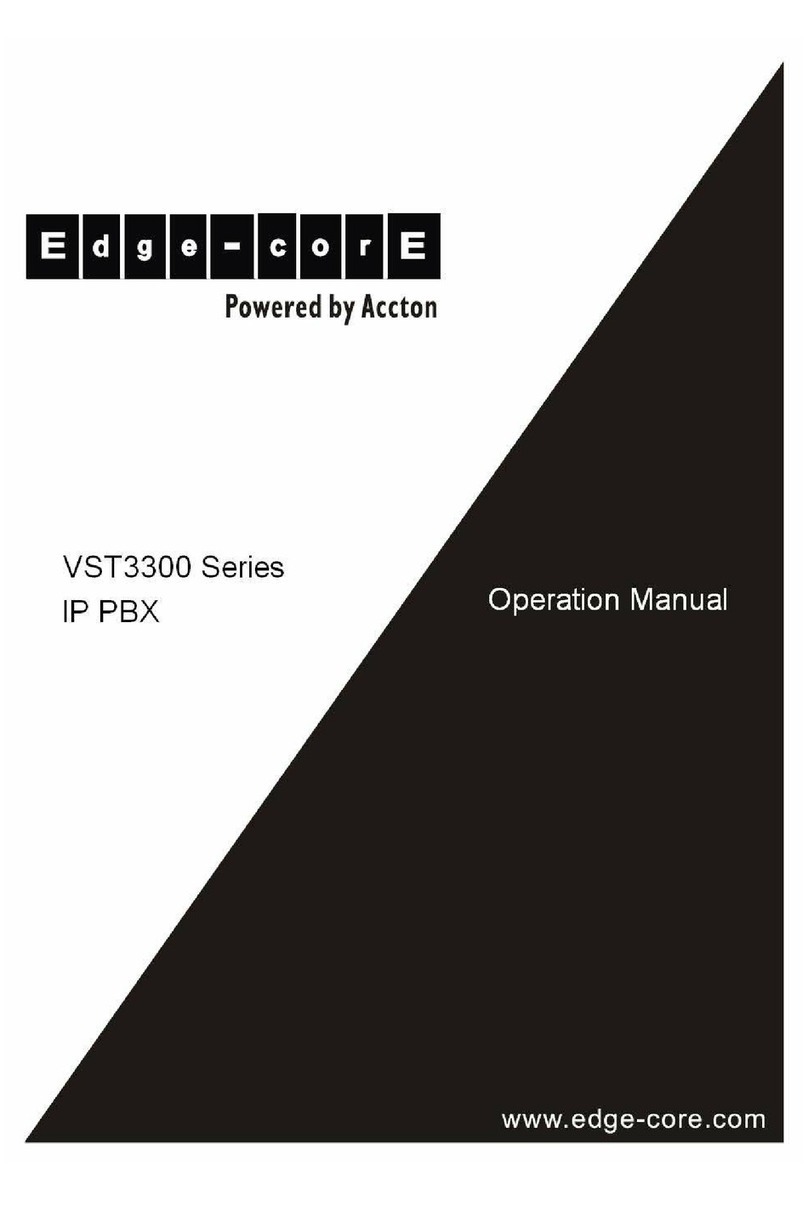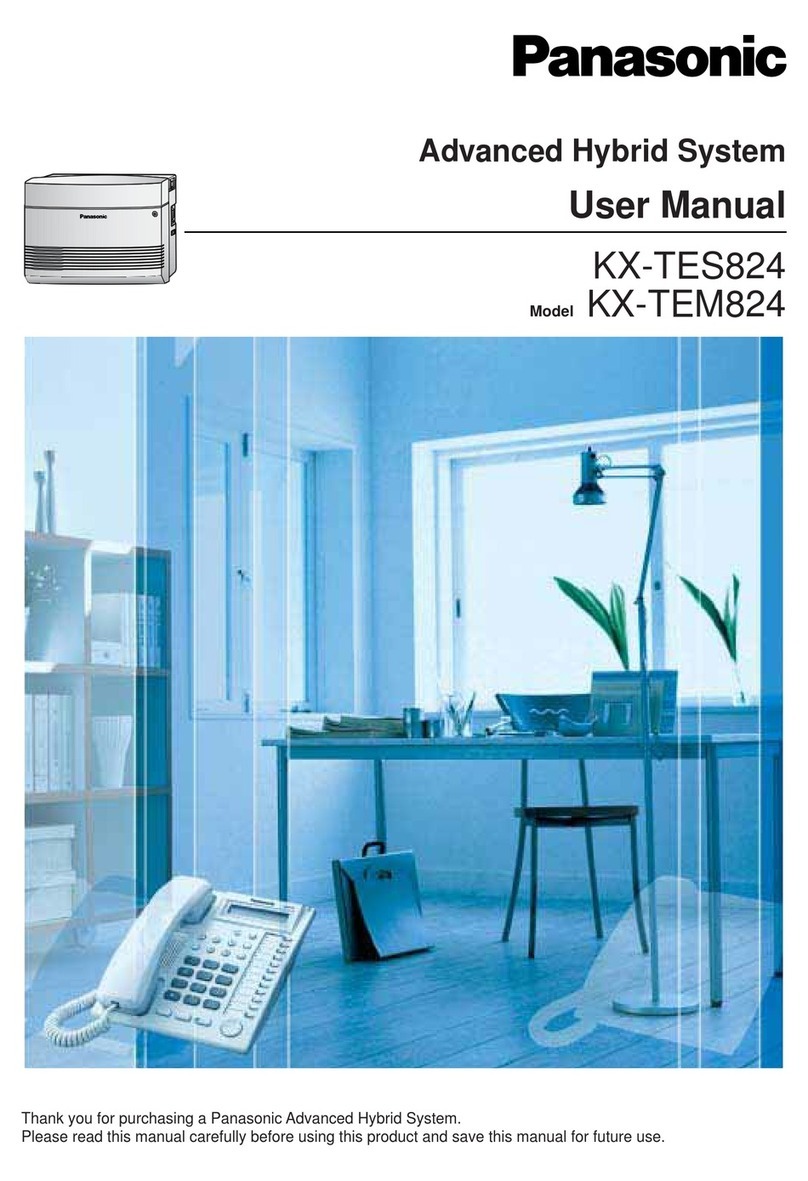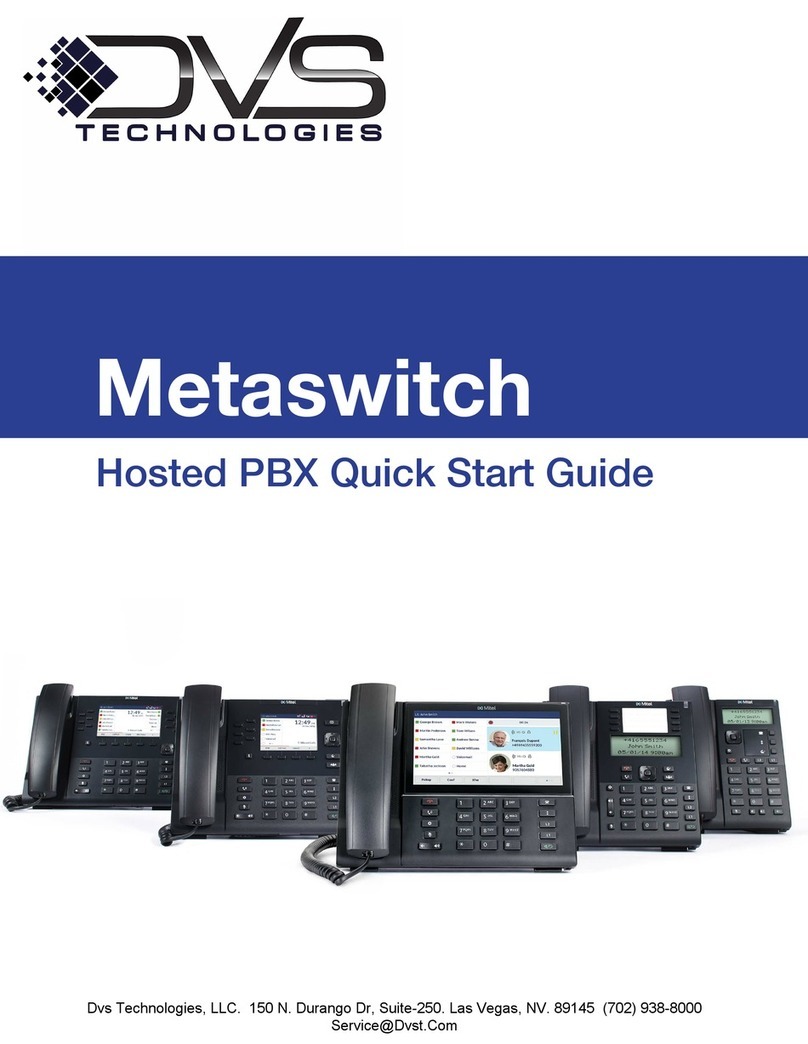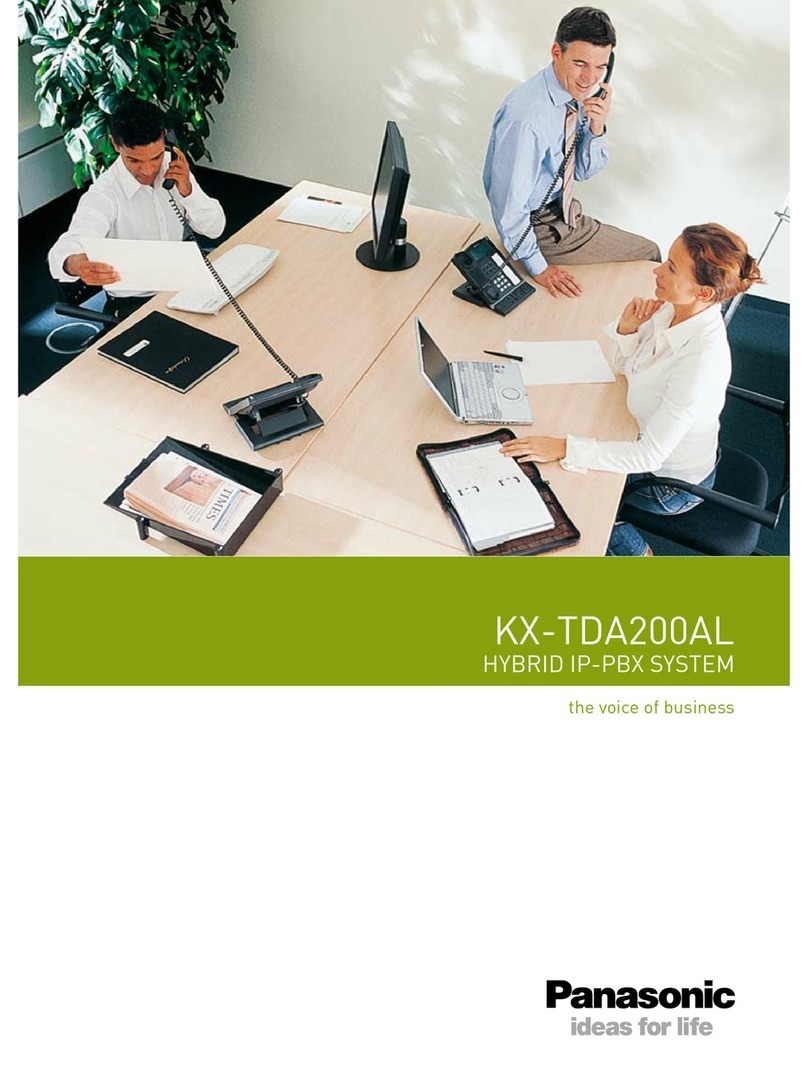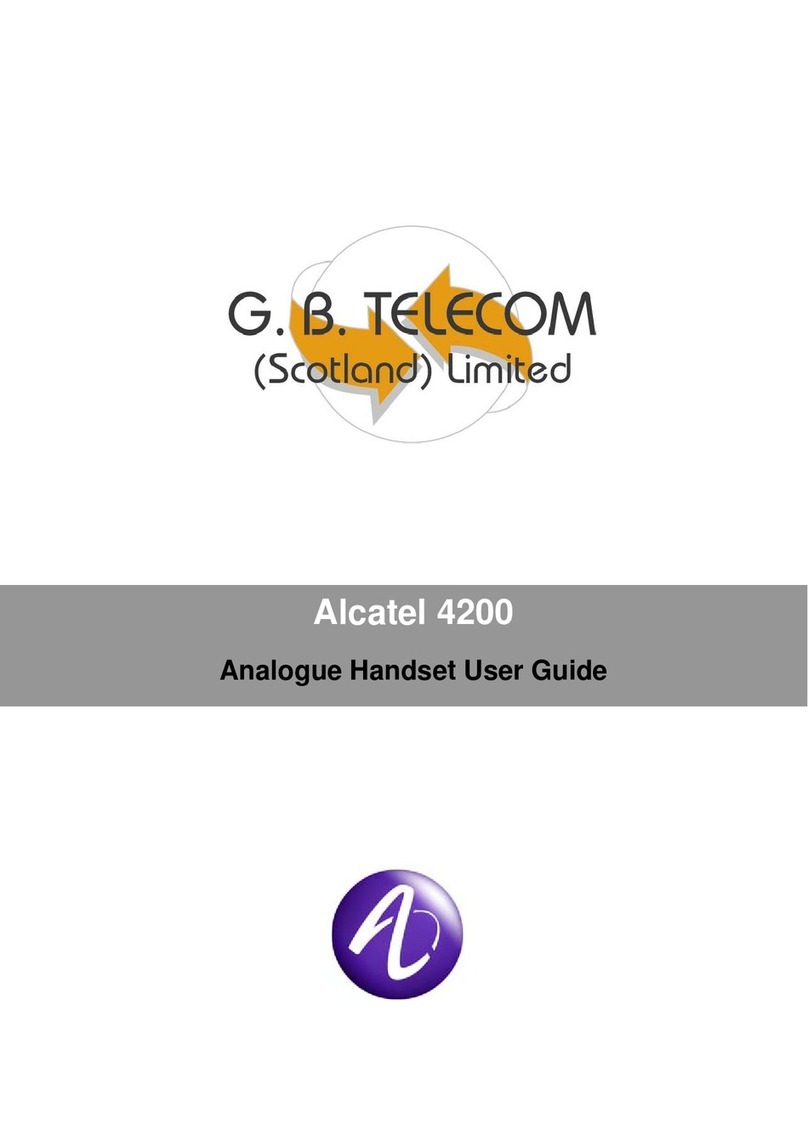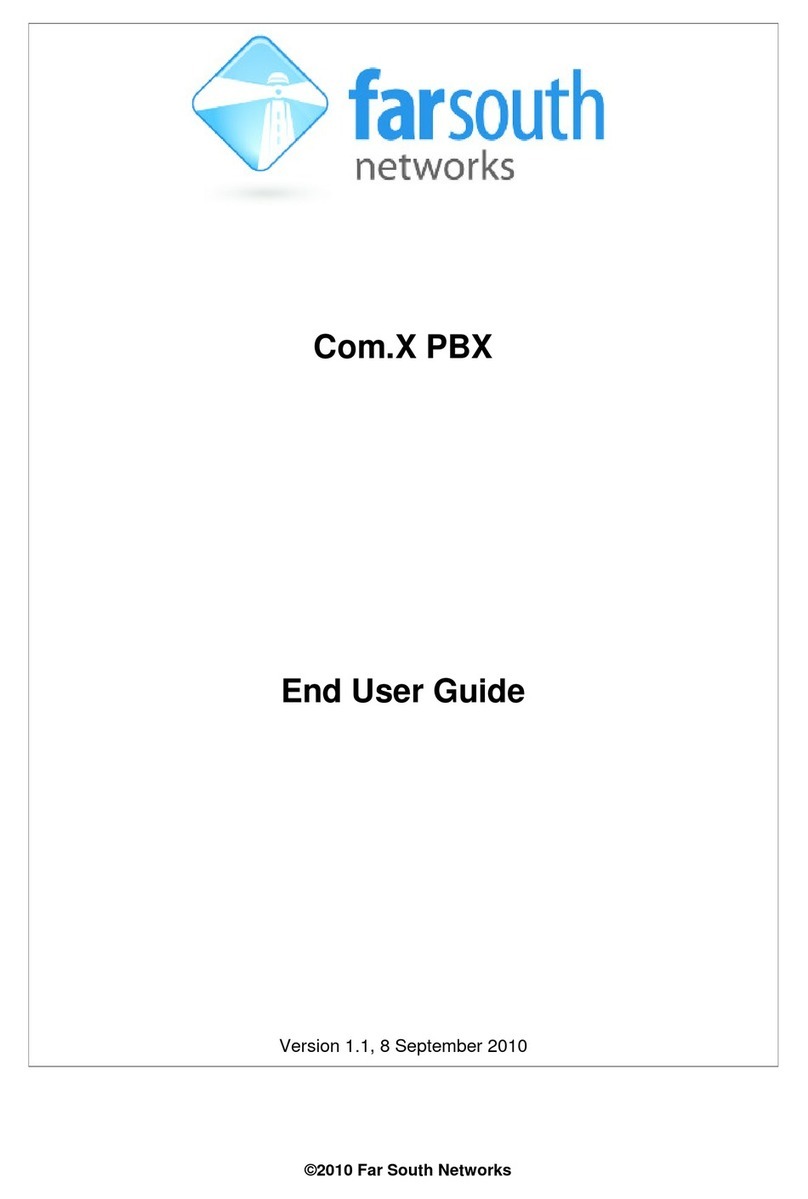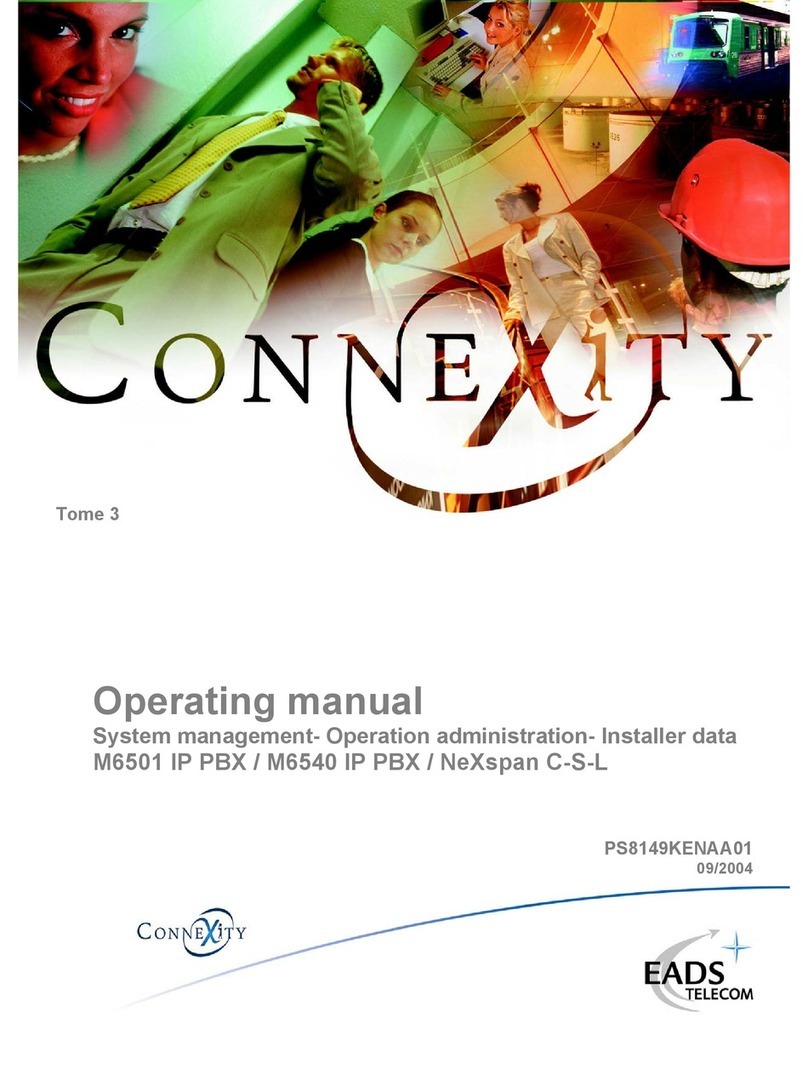Excelltel MK-208 User manual


Table of Contents
Chap 1 Brief Introduction & Features.................................................1
1.1 System Overview ................................................................1
1.2 Features ...............................................................................1
Chap 2 Installation & Connection.......................................................2
2.1 System Appearance............................................................2
2.2 Technical Parameter...........................................................3
2.3 Attention...............................................................................3
2.4 Warning................................................................................4
2.5 Installation procedure ........................................................4
2.5.1 Connecting C.O. lines & extensions to the unit: ......4
2.5.2 Zero-load power-on inspection: ...............................4
2.6 Direct Access when Power Failure ...................................5
Chap 3 System programming ............................................................6
3.1 Before programming ..........................................................6
3.2 Basic Command..................................................................6
3.2.1 Enter into System Programming Status...................6
3.2.2 Change the Password..............................................7
3.2.3 Flash Time Setting ...................................................7
3.2.4 System Return to Default Setting ............................7
3.2.5 Setting Delay time for outgoing call transfer............7
3.3 Enable/Disable C.O. Lines .................................................8
3.3.1 Enable All C.O. Lines ...............................................8
3.3.2 Disable All C.O. Lines ..............................................8
3.3.3 Enable No. M C.O. Line...........................................8
3.3.4 Disable No.M C.O. Line ...........................................8
3.4 Day / night mode & weekend mode setting...................8
3.4.1 System Date/Time setting........................................8
3.4.2 Day/night change mode setting ...............................9
3.4.3 Day/Night work time setting .....................................9
3.4.4 Weekend mode setting (Optional) ...........................9
3.5 Setting Operator................................................................10
3.5.1 Setting Operator.....................................................10
3.5.2 Fast Dialing Operator.............................................10
3.6 Setting Operating mode...................................................10
3.6.1 Setting Operator Mode for All C.O. Lines ..............10
3.6.2 Setting Operator Mode for Certain C.O. line .........10
3.6.3 Ringing mode when all the ringing extensions is
busy....................................................................................11

3.6.4 Setting Auto-attendant Mode (OGM) for All C.O.
Lines ..................................................................................11
3.6.5 Setting Auto-attendant Mode (OGM) for Certain C.O.
line......................................................................................11
3.6.6 Setting Auto-attendant Mode .................................12
3.6.7 CRBT (Directly ringing while play OGM Process in
Auto-attendant Mode)........................................................12
3.7 OGM setting (Outgoing Message)...................................13
3.7.1 Setting OGM paragraph mode...............................13
3.7.2 OGM recordable time.............................................13
3.7.3 OGM Recording (multiple paragraphs mode)........13
3.7.4 OGM playing (multiple paragraphs mode).............14
3.7.5 One paragraph OGM Mode ...................................14
3.7.6 Recording volume Setting & Monitoring ................14
3.8 Monitoring the Holding Music .........................................15
3.9 C.O. Line Call in Auto-attendant Mode Process............15
3.9.1 Enable/Disable OGM Fast dialing function............15
3.9.2 OGM busy Process in Auto-attendant Mode .........15
3.9.3 Auto-attendant Mode no dial Process ...................16
3.9.4 Called Extension Busy Process.............................16
3.9.5 Called Extension No Answer Process ...................17
3.10 Setting Operator Ringing Ext. .......................................17
3.10.1 Ringing Extensions Assignment/ to Cancel in Day
mode ..................................................................................17
3.10.2 Ringing Extensions Assignment/ to Cancel in Night
mode ..................................................................................17
3.11 Dialing-out Mode Setting................................................18
3.11.1 Set Indirect-Dialing-Out Mode for All Exts............18
3.11.2 Set Indirect-Dialing-Out Mode for Certain Ext. ....18
3.11.3 Set Direct-Dialing-Out Mode for All Exts..............18
3.11.4 Set Direct-Dialing-Out Mode for Certain Ext........19
3.12 Call Restriction-Class Assignment...............................19
3.12.1 Class Assignment for All Extensions ...................19
3.12.2 Class Assignment for Certain Extension .............19
3.13 Setting Restriction Item (A/B)........................................20
3.13.1 Setting Restriction Item A.....................................20
3.13.2 Clear Restriction Group of Item A........................20
3.13.3 Clear All Restriction of Item A ..............................20
3.13.4 Setting Restriction Item B ....................................21

3.13.5 Clear Restriction Group of Item B........................21
3.13.6 Clear All Restriction of Item B..............................21
3.14 Assign Special Calling-out Number..............................21
3.14.1 Assign Special Calling-out Number for Class 0...21
3.14.2 Clear Permission of Certain Group......................22
3.14.3 Clear All Permission.............................................22
3.15 Calling Time Restriction Setting / Clear .......................22
3.15.1 Calling Time Restriction Setting...........................22
3.15.2 Clear Calling Time Restriction .............................22
3.16 Exts. Using C.O.Lines Access.......................................22
3.16.1 Assign Exts. Outgoing to Certain C.O. Line / to
Clear in day mode..............................................................22
3.16.2 Assign Exts. Outgoing to Certain C.O.Line / to
Clear in night mode............................................................23
3.17 Flexible coding................................................................23
3.17.1 Assign Extension Number (Freely Change the Exts.
Number).............................................................................23
3.17.2 Restoring Original Extension Numbers ...............24
3.18 Ringing/Transfer/Reservation time...............................24
3.18.1 Internal Call Ringing Time....................................24
3.18.2 Operator Dialing/Transfer Ringing Time ..............24
3.18.3 No Answer Transfer Time/ Call forwarding Time .24
3.18.4 External Line Reservation Time...........................24
3.19 Transfer Operation Parameter.......................................25
3.19.1 External Transfer Mode........................................25
3.19.2 External Transfer to a no answer Extension
Process..............................................................................25
3.19.3 Enable/disable Call Forwarding Settings reserved
when Power Failure...........................................................25
3.20 CID functions Setting .....................................................25
3.20.1 Add Digits for Intercom CID .................................25
3.20.2 Internal CID mode(transmit mode) setting...........25
3.21 Ext. groups function setting ..........................................26
3.21.1 Assign the Exts. groups number..........................26
3.21.2 Join the Exts. groups members ...........................26
3.21.3 Setting the Exts. Groups working mode ..............27
Chap 4 Operating Instruction ...........................................................28
4.1 Day/Night Mode Setting ...................................................28
4.1.1 Manual Setting .......................................................28

4.1.2 Automatic Mode Setting.........................................28
4.2 Outward Call......................................................................28
4.2.1 Outward Dialing 9 First (or Dialing Directly) ..........28
4.2.2 Outward Call by Choosing a Certain Line .............29
4.2.3 CO line booking......................................................29
4.2.4 Automatically Callback when Busy........................29
4.2.5 Outgoing Call Transfer (Secretary Function) .........30
4.2.6 Automatically Redial ..............................................30
4.3 Intercom Call .....................................................................30
4.3.1 Intercom Call at Indirect-Dialing-Out Mode. ..........30
4.3.2 Intercom Call at Direct-Dialing-Out Mode..............31
4.3.3 Calling to Exts.group at Direct-Dialing-Out Mode..31
4.3.4 Connect with Operator Directly..............................31
4.3.5 Extension booking ...............................................31
4.4 Answering call...................................................................32
4.4.1 Answering Calls at Operator Mode........................32
4.4.2 Answering Calls at Auto-attendant Mode ..............32
4.4.3 Call pick up.............................................................32
4.5 C.O. Line Reservation ......................................................33
4.6 Call Transfer (External Call).............................................33
4.6.1 Transfer to one certain Extension..........................33
4.6.2 Transfer to one certain Exts.Group........................34
4.7 Call switch (call pick during conversation) ...................34
4.8 R key function ...................................................................35
4.9 Secretary Function(Outgoing Call Transfer Function) .35
4.10 Three Way Conference (1 C.O. Line and 2 Exts) .........35
4.11 Set & Clear other Ext. Call forwarding through
Programming Extensions ......................................................36
4.12 Call Forwarding...............................................................37
4.12.1 Setting Call Forwarding Directly(Manager/Secretary
function)...........................................................................37
4.12.2 Clear Setting Call Forwarding Directly.................38
4.12.3 Call Forwarding When Ext is Busy or Nobody
Available ............................................................................38
4.12.4 Clear Call Forwarding When Ext is Busy or Nobody
Available ............................................................................38
4.12.5 Setting Call Forwarding (to external number)talking
time ....................................................................................38
4.13 Inquiry Functions............................................................39

4.13.1 Reporting of Ext number for Caller ID phone ......39
4.13.2 Reporting of System time.....................................39
4.13.3 Reporting of PBX System Version.......................40
4.13.4 Reporting of PBX System Status. ........................40
4.14 Priority Access and Monitoring.....................................40
4.15 Setting Don’t Disturb / Clear..........................................40
4.15.1 Setting Don’t Disturb ............................................40
4.15.2 Clear Don’t Disturb...............................................41
4.16 Clear Extension Function Setting .................................41
4.17 Call All Extension............................................................41
Chap5 Maintenance&Troubleshooting.............................................42
5.1 Outgoing calls can’t be made..........................................42
5.2 Outside calls can’t dial in.................................................42
5.3 Intercom can’t be made....................................................42
Chap 6 Glossaries............................................................................43
Chap 7 Default Settings ...................................................................44
Chap 8 System Programming & Operation Instruction....................45
8.1Index of Basic Operation ..................................................45
8.2 Index of system programming ........................................46
Day/Night work time setting...............................................46
External Transfer Mode .....................................................47
Appendix I Abbreviated-dialing ..........................................50
1.1 Programming setting.................................................50
1.2 Operating instruction.................................................50
Appendix II Auto FAX Detect function ...............................51
2.1 Programming setting.................................................51
Operating instruction..........................................................51
Appendix III Intelligent Routing select (LCR)....................51
3.1 Intelligent Route select functions ..............................51
3.2 Programming setting.................................................51
3.3 Operating instruction.................................................53
Appendix IV IP dialing function ..........................................54
4.1 Programming setting.................................................54
4.2 Enable/Disable IP Dialing function,...........................54
4.3 IP Prefix Number Setting ..........................................54
4.4 IP Prefix Dialing.........................................................54
Appendix VI Door-phone Functions...................................55
5.1 Connections instruction:............................................55
5.2 Setting Door-phone function .....................................55

5.2.1 Setting the connector port for Door-phone ............55
5.2.2 Doorphone ringing Extensions Assignment .....56
5.2.3 Door phone call auto transfer to CO line setting ...56
5.2.4 Setting Duration of switch Signal...........................56
5.3 Operating Instruction .......................................................56
5.3.1 Door phone call & Door opener (call internal
extension) ..........................................................................56
5.3.2 Door phone call & door opener( forwarding to C.O
line) ....................................................................................57
5.3.3 Door-open directly..................................................57

1
Chap 1 Brief Introduction & Features
1.1 System Overview
With its design and manufacture according to G.712 and G.732
protocols of CCITT, the system integrates virtues of various KTSs with
advanced functions of PABX, and has unique advantage in innovation. As
a type of new generation with over 50 powerful functions for business and
management, it has wide application in offices, enterprises, hotels……etc.
In a word, it is a ideal equipment for users to better communication
conditions, improve work efficiency, control call fee payment, and make
office intelligent come true.
1.2 Features
Top-quality elements of system hardware, ISO 9000 standard,
excellent circuit design. So a complete system is of advanced
technology and high integrated level.
Programming can be made by key phone or regular phone
Transfer caller ID
Automatically redial while the Ext is at Direct-Dialing-Out mode&
Indirect-Dialing-Out mode.
One key phone interface
Real time clock and can set day/night/ lunch time.
Automatically CO line transfer to CO line.
Auto LCR & IP prefix dialing
96 groups abbreviate dialing
Fax detect
Up to 50s OGM recording in four paragraphs

2
Chap 2 Installation & Connection
Before Installation
For easy and quick installation and connection, it is strongly
recommended that the user read and follow the following instruction
carefully so as not to damage the system accidentally by incorrect
operation.
2.1 System Appearance
NOTE:
1. For 208 the line 2 & the N.O. (and for 308 the line 2& the line 3 )
interface pin1 & pin4 is a relay output port for door lock, pin 2 &
pin3 is for Co line. As picture:
2. Ext 601 is the keyphone interface , also Ext 601 can connect normal
phone, As picture:
3. For music interface is for external holding music input (connect to
MP3 player).

3
208/308 Front View: 208/308 Rear View :
External Music interface① Co line Port②
Extension Por③t Power Socket④
Lock interface 2⑤Lock interface 1⑥
keyphone interface⑦
208/308 Connection Diagram:
2.2 Technical Parameter
Power Supply Voltage ----------------AC 220V or AC 110V, 50-60Hz
Power Dissipation ----------------------≤20VA
Exchange Mechanism-----------------Analog spatial division
Type of Telephone-----------------------Dual Tone Multi-Frequency
Communications Lines----------------108---2(1 for Ext.,1 for CO line);
206---3; 208/308---7
IC Power Supply ------------------------±5V
Distortion ---------------------------------≤10%
Ringing Voltage -------------------------AC 70V±10% 50HZ
Crosstalk Attenuation -----------------≧70 dB
Transmission Loss--------------------- 0.37 dB
2.3 Attention
Please pay attention to the important items of installation:

4
1. The telephone exchange shall be installed in a stable indoor place
with dry, ventilated environment. (Temperature Range: 0-45 ,℃
Humidity Range: 20%-80%.Avoid straight sun shine or in the
environment of flammable or caustic gas.) Special telephone wire is
preferable.
2. A marginal space around the exchange should be remained for heat
sink, inspection and maintenance of the system.
3. A wall bore is available at the underside of mainframe for wall
installation. Desk installation is also admitted. But the contact of wall
bolt and circuit board inside the mainframe should be avoided.
4. Please keep the exchange away from other equipment producing
large electromagnetic disturbance (such as motor and large
transformer).
5. None of the wiring of any extension should share the pipeline with
power supply or antenna. Neither should the extension be close to
antenna for air broadcasting (including short-wave).
6. Avoid damaging the power-supply cable. Keep it away from water.
Encountering the leakage of water cut off the power immediately.
7. Please don't impact or shake the exchange at any situation. Don't
remove the exchange in working status.
8. If the wiring pipeline of the extension is disturbed by electromagnetic
wave while substitution is unavailable in site, special insulating wire
for communication is suggested for substitution, also, the insulating
net of which should be grounded.
2.4 Warning
1. The wiring should not be done in thundering.
2. Avoid using telephone in thundering.
3. Please don't use the telephone in flammable and leaking gas
environment.
4. Unless the equipment is disconnected, please don't touch the broken
part of the wiring or any connection ends.
●Note: Lightning stroke is an accident, which will not be regarded as
normal maintenance.
2.5 Installation procedure
2.5.1 Connecting C.O. lines & extensions to the unit:
1. Please connect the monomer-crystal with EXT. line and C.O. line
separately;
2. Make sure to avoid short circuit.
3. Connecting extensions according to the in-dilated extension positions
and C.O. lines to the corresponding line ports on the unit.
2.5.2 Zero-load power-on inspection:
1. The operation voltage of this product is AC220V or AC110V. Check

5
out the voltage of local power supply. A UPS backup is highly
recommended.
2. Plug in the power supply line, indicating normal power supply and
working state of the machine.
3. Pick up the handset of extension 601. A sharper internal dial tone
indicates that the system is working normally. You can start to setup
operation now.
2.6 Direct Access when Power Failure
The C.O. lines will be connected direct to the special Exts
automatically when the power failure. The No.1 C.O. line will be connected
to Ext. 602 and No.2 to Ext.603, No.3 to Ext.604, So you only can use the
Three Exts as normal phone with direct C.O. line.
For example when someone call in with No.1 C.O. line at the time of
power failure, the Ext.602 will ring, you can only pick up Ext. 602 and talk
with the caller.

6
Chap 3 System programming
3.1 Before programming
● All the programming must be carried out on the extension 601, 602, 603,
604; all the programming must be into system programming status.
● All the extensions must be of dial tone multi-frequency phone with caller
id function.
● You are allowed to operate one by one, and end the process by simply
pressing #. You don’t have to hang up if something wrong occurs, you
could press * to restart.
● If programming-extension (601, 602, 603, 604) is in Direct-Dialing-Out
mode, you need to press * to enter the internal system, then start
programming.
● When the setting is finished, a long beep indicates that the setting is
done correctly and saved in the system. If instead an array of short
chirps is heard, that would indicate an error occurred in the setting. You
need to check it out and reset the system. It is only after the end of the
long beeps you can continue another system operation.
How to programming
At first you must according 3.2.1 instruction enter into system
programming status, and then you can begin to program as the
following instruction.
3.2 Basic Command
3.2.1 Enter into System Programming Status
Format: * # * EFGH
Explanation: EFGH is the system password,default is 0000.
Example: For programming the system, you should enter the password
first, if the password is 5678,as below:
1. You are required to dial: * # * EFGH in the Direct-Dialing-Out
mode.
2. The default password is 0000, so you must enter 0000 in the first use
3. Programming telephone is EXT601, or EXT.602, or EXT.603, or Ext.
604.

7
3.2.2 Change the Password
Format: 09EFGH#
Explanation: EFGH is the new system password.
Description: to change the password of system programming.
Example: Changing the system password from “0000” to “5678”
1. We suggest changing the password before using.
3.2.3 Flash Time Setting
Format: 00F #
Explanation: F means the flash time.
F=1 ---------0.8s
F=2 ---------1.0s
F=3 ---------1.2s
F=4 ---------1.5s
F=5 ---------1.8s
Description: For active the hold and divert operating use.
In default setting: F=2 (1.0s)
Example: Set the flash time to 1.2S
3.2.4 System Return to Default Setting
Format: 0000 #
Description: The system will restart with the default factory setting.
The command has no effect on the status of enabling/disabling C.O. line.
3.2.5 Setting Delay time for outgoing call transfer
Format: 0 3 T T #
Description:T=01-99, unit is second; this time mean the time which is
from finish dialing the last number to the system start to allow system
transfer function, The system restriction time also from this time.
Default setting: Duration of time-delay being 5 seconds.
Example: Setting delay time: 8s, then input 0 3 0 8# in programming
status.

8
3.3 Enable/Disable C.O. Lines
You must use these commands according to the actual trunk lines before
using this product!!! If you don’t enable any C.O. line, the system will
consider there is no C.O. line and doesn’t auto detect C.O. line!!!
3.3.1 Enable All C.O. Lines
Format: 0600#
Description: Enable all C.O. lines
In default setting: 208/308 are in Disable status
3.3.2 Disable All C.O. Lines
Format: 0610#
Description: Disable all C.O. lines
3.3.3 Enable No. M C.O. Line
Format: 060M#
Explanation: M: C.O.line No.M=1-3
Description: Enable the M C.O. line
Example: You have 208/308 model product, you want use C.O. line 1
and C.O. line 2, and the line 3 is not in use.
3.3.4 Disable No.M C.O. Line
Format: 061M#
Explanation: M: C.O.line No.M=1-3
Description: Disable the M C.O. line
3.4 Day / night mode & weekend mode setting
3.4.1 System Date/Time setting
Format: 01YYMMDD# Set year/month/date of system
Explanation: YY: year, 00-99
MM: month, 01-12 DD: date, 01-31

9
Format: 02 HHTT# Setting Hour/Minute of system
Explanation: HH: hour, 00-23, 24 hours mode
TT: minutes, 00-59
Format: 020000W # Set week of system
Explanation: W: Week, 1-7(7 = Sunday)
Example: Set system to 2002/12/18 21:30 Sunday
3.4.2 Day/night change mode setting
Format: 0 4 0# Set day/night mode in automatically changing mode
0 4 1# Set day/night mode in manual changing mode
3.4.3 Day/Night work time setting
Format: 0 4 2 HH TT # day mode start time,
0 4 3 HH TT # night mode start time, HH-hour (24), TT-minute
0 4 4 HH TT # lunch start time, HH-hour (24), TT-minute
0 4 5 HH TT # lunch end time, HH-hour (24), TT-minute
Explanation: HH-hour (24), TT-minute
Description: Above time is for 24-hour format. Between 0 o’clock and
starting time of day, between lunch starting time and lunch ending time,
between starting time of night and 24:00(0 o’clock) are night work mode.
Between starting time of day and lunch starting time, between lunch ending
time and starting time of night are day work mode.
3.4.4 Weekend mode setting (Optional)
Format: 0 4 8 0 # enable weekend mode function
0 4 8 1 # disable weekend mode function, this is default
setting
04900 # to set from Monday to Sunday as work day, this
is default setting
0 4 9 0 W # to set week W as work day
0 4 9 1 0 # to set from Monday to Sunday as weekend day
0 4 9 1 W # to set week W as weekend day.
Explanation: W: Week, 1-7(7 = Sunday)
Description: Weekend mode means when the day in week is set to work
day ,then the system’ day/night mode will change according the setting in
3.4.1& 4.1, and when the day is define to weekend day, then the system is
in night mode.
Example: To set Monday to Friday as work day, and Saturday and Sunday
as weekend day, then input 04900# ,04916#,04917# ,0480# ,also you
should set day/night mode in automatically mode and day mode start &
end time.

10
3.5 Setting Operator.
3.5.1 Setting Operator
Format: 15N #
Explanation: N: the Ext. line No., N=1-8
Description: To assign any Ext as the operator. In the default setting,
Ext.602 is the operator.
Example: Setting Ext.602 as operator
In operator mode, this programming doesn’t change the ringing
extension assignment
3.5.2 Fast Dialing Operator
Format: 1 5 2 0 # default setting.
Description: enable the extensions dialing call-operator code to call the
operator quickly,
Format: 1 5 2 1 #
Description: disable the extensions to dialing call-operator code to call the
operator quickly.
3.6 Setting Operating mode
The system can be set three operating modes, that is when CO line
incoming call arriving, there will be three modes: operator work mode,
auto-attendant work mode, system CRBT mode
NOTE: All the C.O. lines are in operator mode is the default setting,
the operator ringing Extension is 601 and 602.
3.6.1 Setting Operator Mode for All C.O. Lines
Format: 11#
Description: Allows all the C.O. lines in Operator mode. In this mode, the
operator extensions and other ringing extensions will ring when an
incoming call is received.
3.6.2 Setting Operator Mode for Certain C.O. line
Format: 11M#
Explanation: M: C.O. line No.1-No.3
Description: allows the No.M C.O. line in Operator mode.
Example: Set C.O. line 1 and 3 in operator mode, other C.O. line in
Auto-attendant mode.

11
1. When the C.O. line is in operator mode, the Operator mode ringing
extension (setting refer3.10.1&3.10.2) will be ringing when calling in, the
caller can hear the ringing tone.
2. Operator mode or auto-attendant mode, certain C.O. line just can be
in one status, but if set the certain C.O. line into auto- attendant mode, the
operator mode will be canceled automatically.
3.6.3 Ringing mode when all the ringing extensions is busy
Format: 1 8 8 0 #
Description: While the C.O. line coming in, and all the ringing extensions
assigned to C.O. line is busy , the system will send waiting call beep to the
ringing extensions for every five seconds, these extensions is assigned to
the C.O. line, this is default setting.
Format: 1 8 8 2#
Description: enable the system to send waiting call beep.
Format: 1 8 8 3#
Description: disable the system to send waiting call beep.
Format: 1 8 8 1 #
Description: While the C.O. line come in, and all the ringing extensions
assigned to C.O. line is busy, instead of sending the waiting call beep, the
system will find the first idle extension begin from Ext. 601 to Ext. 608 in
sequence then ringing it.
These setting will take effect only when the system in operator mode
3.6.4 Setting Auto-attendant Mode (OGM) for All C.O. Lines
Format: 1 0 #
Description: allows all the C.O. lines in Auto-attendant Mode (DISA --Direct
Inward System Access status). In this mode, Caller will hear the OGM recorded
message, while all extensions are in MUTE mode
1. If the caller doesn’t know the extension number, he cans inquiry the
operator by dialing “0”.
2. Outgoing Message must be record when setting this mode.
3.6.5 Setting Auto-attendant Mode (OGM) for Certain C.O. line
Format: 10M #
Explanation: M: C.O. line No.1-No.3
Description: allows the No.M C.O. lines in Auto-attendant Mode (DISA
--Direct Inward System Access status).
Example: Set C.O. line 2 and 3 in Auto-Attendant mode, other C.O. line in operator mode.

12
1. If the caller doesn’t know the extension number, he can inquiry the
operator by dialing “0”.
2. Outgoing Message must be record when setting this mode.
3.6.6 Setting Auto-attendant Mode
Format: 0 4 4 0 # Enable auto-attendant (OGM) in day and night
0 4 4 1 # Enable auto-attendant in day (means in night
is operator mode)
0 4 4 2 # Enable auto-attendant in night (means in day
is operator mode)
Example: Set CO line 1 and 2 is operator mode in day, and is
auto-attendant mode in night; CO line 3 is operator mode in day and night.
then you should input 10#, 113#, 0442#。
3.6.7 CRBT (Directly ringing while play OGM Process in Auto-attendant Mode)
NOTE: I、This is a new mode; allow the caller form outside can hear OGM
while the system directly ring the assigned extensions without dialing any
extension numbers.
II、You should set the C.O. line in Auto-attendant mode first.
III、In this mode we suggest you record the OGM in one paragraph.
Format: 1 67 # this is default setting
Description: disable directly ringing extensions while playing OGM in
auto-attendant mode.
Format: 1 6 7 0 #
Description: enable directly ringing extensions while playing OGM in
auto-attendant mode,and the ringing extensions is the first& the second
operators
Format: 1 671# to ring the first Exts.Group
Format: 1 672# to ring the second Exts.Group
Description: Enable directly ringing extensions while playing OGM in
auto-attendant mode, and the ringing extensions is the setting Exts.
Groups.
Format: 1 6 7 6 #
Description: enable directly ringing extensions while playing OGM in
auto-attendant mode, the system will call the operator mode Ringing
Extensions.
NOTE:Exts.Group setting refer3.10.1&3.10.2

13
3.7 OGM setting (Outgoing Message)
This system has one OGM with 50 seconds (default) recordable time.
3.7.1 Setting OGM paragraph mode
The system use up to four paragraph of OGM messages, and can be set in
four modes, see below:
Format: 0451# Set OGM to be one paragraph mode
0452# Set OGM to be two paragraph mode
Description: In two paragraph mode, it is day/night mode, while in
day-time the system use the first paragraph, in night-time the system use
the second paragraph)
Format: 0453# Set OGM to be three paragraph mode;
It is default setting
0454# Set OGM to be four paragraph mode
Description: In four paragraph modes, while in day-time the system uses
the first three paragraphs recording, in night-time the system use the fourth
paragraph).
3.7.2 OGM recordable time
For 50 seconds type
In one paragraph mode is total 50 seconds.
In two paragraph mode each paragraph is 25seconds
In three paragraph mode three paragraph 20-15-15 seconds
In four paragraph mode the first is 18seconds ,the fourth
paragraph is 16seconds,and the second & the third paragraph is
8 seconds.
For 60 seconds type (Optional )
In one paragraph mode is total 60 seconds.
In two paragraph mode each paragraph is 30seconds
In three paragraph mode each paragraph is 20seconds
In four paragraph mode the first & fourth paragraph is
20seconds,the second & the third paragraph is 10seconds
For 90 seconds type (Optional )
In one paragraph mode is total 90 seconds.
In two paragraph mode each paragraph is 45seconds
In three paragraph mode each paragraph is 30seconds
3.7.3 OGM Recording (multiple paragraphs mode)
Format: 1 2 M #( M=1,2,3, 4, the paragraph of the OGM )
Description: Used to record an outgoing message for Direct Inward
System Access (DISA).
OGM 1 recording, this is the first OGM, usually it is for company greeting,
for example, you may record “This is ABC company, please dial
extension number or dial “0” for operator. Thanks you for calling.”
OGM 2 recording , this is the second OGM, usually it is for C.O. line dial
This manual suits for next models
1
Table of contents
Other Excelltel PBX manuals
Popular PBX manuals by other brands

Nortel
Nortel Meridian 1 Succession 1000M Installation and configuration

CCL
CCL COX-308 HSK Operating & programming manual
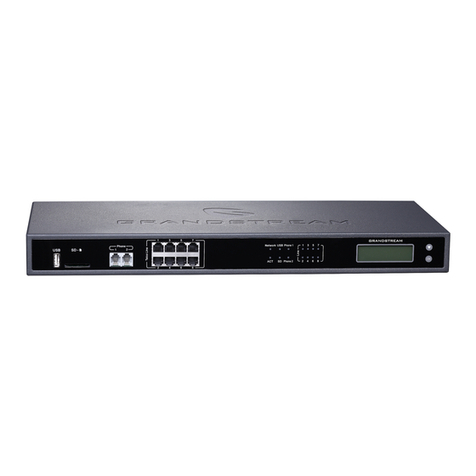
Grandstream Networks
Grandstream Networks UCM6202 user manual
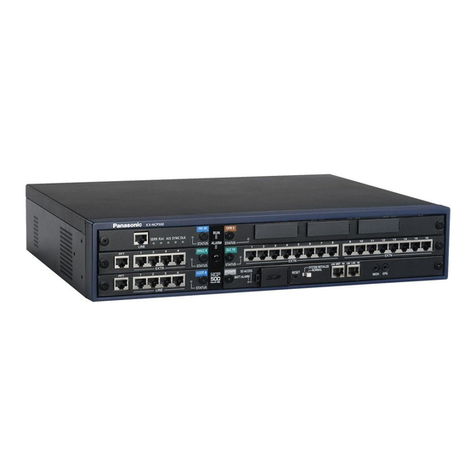
Panasonic
Panasonic KX-NCP500 Pc programming manual

ADK SECURITY
ADK SECURITY ADK-16300 Administrator's guide
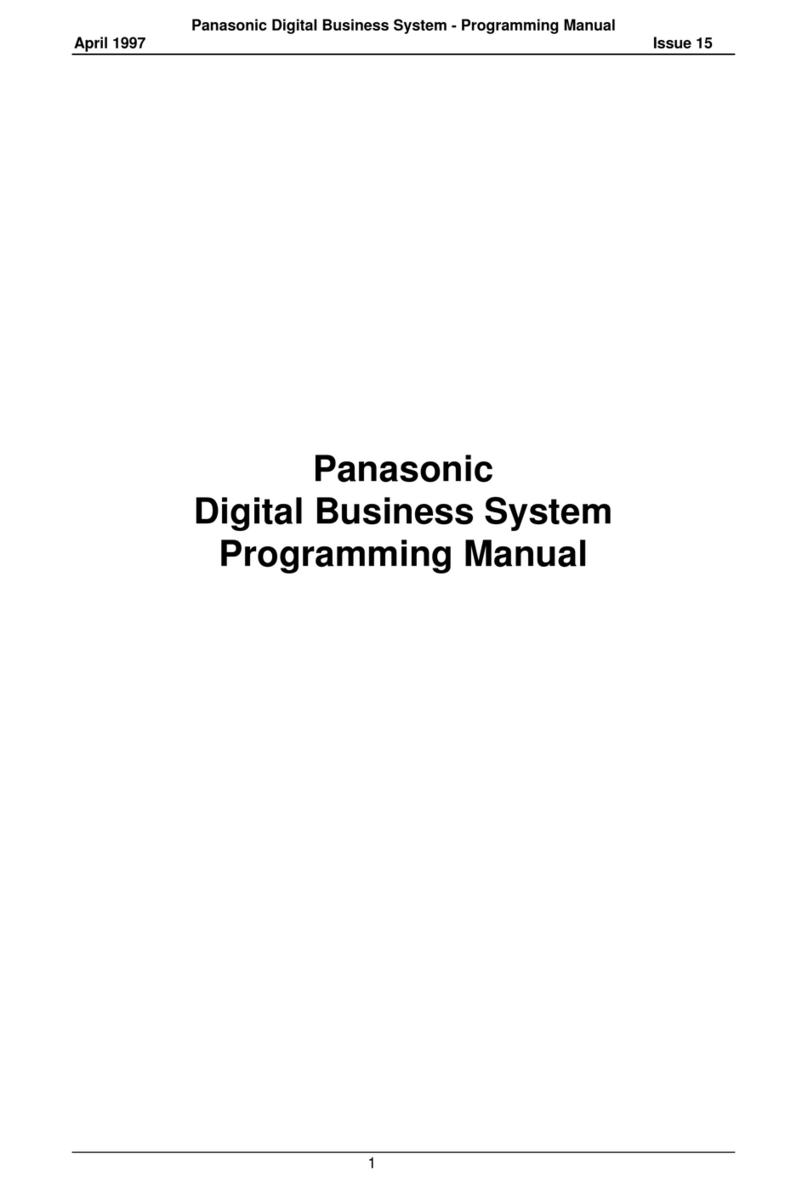
Panasonic
Panasonic DBS Series Programming manual
